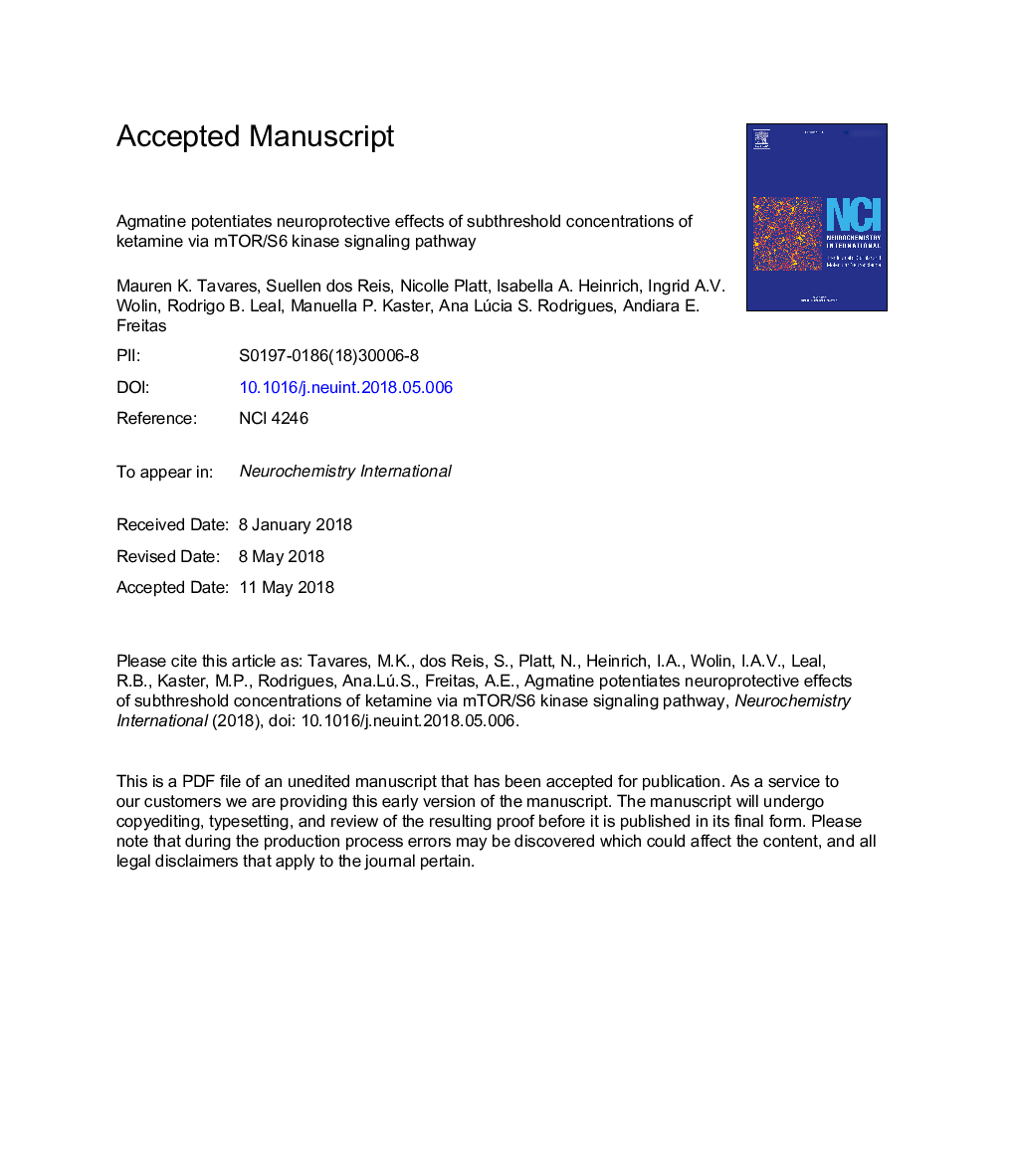| Article ID | Journal | Published Year | Pages | File Type |
|---|---|---|---|---|
| 8478896 | Neurochemistry International | 2018 | 43 Pages |
Abstract
Dysregulation of the hypothalamic-pituitary-adrenal (HPA) axis is one of the most robust neurobiological findings in the pathophysiology of major depressive disorder (MDD) over the last 40 years. The persistent increase in glucocorticoids levels induces morphological and anatomical changes in the brain, especially in the hippocampus. Ketamine represents a major advance for the treatment of MDD, however the psychotomimetic effects of this compound limit its widespread use. Agmatine is a neuromodulator that has been shown to be a putative novel and well-tolerated antidepressant/augmenter drug. In this study, the exposure of HT22 hippocampal neuronal cell line to corticosterone (50â¯Î¼M) induced a significant neuronal cell death. Interestingly, the incubation of HT22 cells with the fast-acting antidepressant drug ketamine (1â¯Î¼M) prevented the corticosterone-induced toxicity. Similarly, agmatine caused a significant cytoprotection at the concentration of 0.1â¯Î¼M against corticosterone (50â¯Î¼M) cell damage. Notably, the incubation with a subthreshold concentration of ketamine (0.01â¯Î¼M) in combination with a subthreshold concentration of agmatine (0.001â¯Î¼M) prevented the neuronal damage elicited by corticosterone (50â¯Î¼M). A 24â¯h co-incubation with subthreshold concentrations of ketamine (0.01â¯Î¼M) and agmatine (0.001â¯Î¼M) was able to cause a significant increase in the phosphorylation levels of Akt (Ser473) and p70S6 kinase (Thr389) as well as PSD95 immunocontent. Neither glycogen synthase kinase-3β (Ser9) phosphorylation nor β catenin immunocontent were altered by a 24â¯h co-incubation period. Finally, the co-incubation of cells for 30â¯min did not produce any effect in the phosphorylation or immunocontent of any protein investigated. Taken together, our results support the notion that the combination of subthreshold concentrations of ketamine and agmatine has cytoprotective effects against corticosterone-induced cell death. This effect is accompanied by its ability to activate Akt and mTOR/S6 kinase signaling pathway, and increase the expression of synaptic proteins.
Keywords
4E-BPsTSTN-methyl-d-aspartateNMDA1-methyl-4-phenylpyridiniumPKBPSD95FSTmTORC1TCFTSCMDDTCANrf2CuSPI3KRHEBS6KLEF1LPSDMEMPDK-1ECTHT223-(4,5-dimethylthiazol-2-yl)-2,5-diphenyltetrazolium bromideDulbecco's modified Eagle MediumMPP+MTTp70S6 kinaseTail suspension testforced swim testAktAgmatineMajor depressive disorderchronic unpredictable stressanalysis of varianceANOVAtuberous sclerosistumor necrosis factor-αTricyclic antidepressantElectroconvulsive therapyRas homolog enriched in brainT-cell factorlymphoid enhancer factorHypothalamic pituitary adrenalTNF-αPhosphatidylinositol 3-kinasephosphatidylinositol-3,4,5-trisphosphatelipopolysaccharideNeuroprotectionSelective serotonin reuptake inhibitorSSRIHPAMammalian target of rapamycin complex 1Phosphoinositide-dependent kinase-1postsynaptic density protein-95protein kinase BPropidium iodideKetamine
Related Topics
Life Sciences
Biochemistry, Genetics and Molecular Biology
Cell Biology
Authors
Mauren K. Tavares, Suellen dos Reis, Nicolle Platt, Isabella A. Heinrich, Ingrid A.V. Wolin, Rodrigo B. Leal, Manuella P. Kaster, Ana Lúcia S. Rodrigues, Andiara E. Freitas,
